Written by Calvin on May 1, 2009/Calvin's Corner
CYCLING... the book
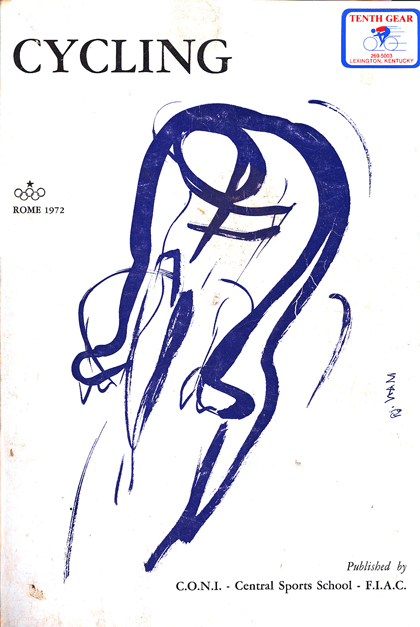 Figure 1. The cover of CYCLING, seen here with shop grime and a shop sticker
Figure 1. The cover of CYCLING, seen here with shop grime and a shop sticker
With the arrival of summer, it is prime time for good riding and fine reading. In this edition of Calvin’s Corner I will provide a book report of a tome which influenced me, and my way of thinking. It is sometimes long after reading a piece of literature, and then by rereading it, does it become clear what it means to you. Such a book is CYCLING, published by the C.O.N.I. (Comitato Olimpico Nazionale Italiano), Rome, Italy. This edition was published in 1972 (Figure 1) but first editions are from 1968. Unfortunately this book is not currently in print, and is unlikely to ever be in print again. Why review such a book? Because I feel it speaks in important ways to the spirit and heart of the sport of competitive cycling. I will give a sense of the book’s content, comment on some interesting sections, and conclude with why this is an important document.
CYCLING was, I assume, first published in the Italian language. The English version I have is divided into three parts, with a total of 22 chapters. It is apparent at a glance that CYCLING was written during a time and about a sport where gender bias was the norm. The words “her” or “she” or “woman/women” appear not once in all the 271 pages.
The book is graced with four stunning and beautiful plates, including the one seen on the cover, by the Italian artist Ottorino Mancioli. The contents are broken into three parts, and then into chapters, as follows:
PART I—CYCLING AND ITS SCIENTIFIC APPLICATIONS
- Chap. 1—History of the Bicycle
- Chap. 2—Sports Hygiene
- Chap. 3—Physiopathology of Cycling
- Chap. 4—Nutrition and Feeding
- Chap. 5—Massotherapy
PART II—THE BICYCLE
- Chap. 1—Cycling Mechanics
- Chap. 2—Maintenance of the Bicycle
- Chap. 3—Tubular Tyres
- Chap. 4—Ratios
- Chap. 5—Modalities for Constructing a Frame to Measure
PART III—CYCLING TECHNIQUE
- Chap. 1—Biomechanics of Pedaling
- Chap. 2—Position on the Bicycle
- Chap. 3—Performance
- Chap. 4—Resistances
- Chap. 5—General Physical Preparation
- Chap. 6—Preliminary Training
- Chap. 7—Training
- Chap. 8—Winter Preparation
- Chap. 9—Road Races
- Chap. 10—Track Races
- Chap. 11—The Sports Manager
- Chap. 12—Survey and Appraisal of the Personality of the Athlete
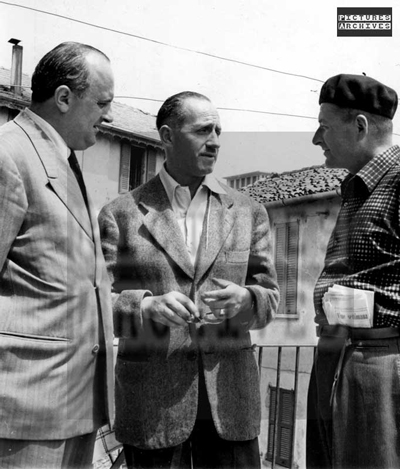 Figure 2. Left to right: Adriano Rodoni, Jacques Goddett, and Aldredo Binda, all legends in their own right. Mr. Rodoni: President of the F.I.A.C. (before it became the UCI); Jaques Goddett, promoter of the Tour de France; Alfredo Binda, early champion and founder of the Binda toe strap company (photo courtesy of Pictures Archives. Image not included in the book)
Figure 2. Left to right: Adriano Rodoni, Jacques Goddett, and Aldredo Binda, all legends in their own right. Mr. Rodoni: President of the F.I.A.C. (before it became the UCI); Jaques Goddett, promoter of the Tour de France; Alfredo Binda, early champion and founder of the Binda toe strap company (photo courtesy of Pictures Archives. Image not included in the book)
To set the background for this classic manual, in 1972 the World Cycling Championships were won by Marino Basso of Italy, of Basso Bikes fame, Hennie Kuiper won the gold in Munich at the Olympic Games, and Eddie Merckx won the Tour de France. If you do not know these names, then you must trust me when I say this was an era of giants who rode the earth. However, Adriano Rodoni, the President of the F.I.A.C. (precursor of the UCI) writes an almost apologetic introduction, explaining how technical the sport has become, due to ” ...the cold pigeon-holes of reason, less and less space... allowed for the imagination. Adventurous sport, improvised and invented sport— whether we accept the fact with joy, resignation or regret—has gone for good, together with the mentality of an age past.”
Mr. Rodoni was what we called a “delegato,” a sports politician, and he wrote only the introduction. The text was produced by “our foremost technicians, (producing) a doctrine of the Italian school.” The book is translated, clumsily, from Italian, and the reading is slow, as the choices of words do not fit the modern world. My own predilection for run-on sentences may have been inadvertently influenced by this manual during a formative period of my youth, a time when I was susceptible to placing copious quantities of words on paper for no good effect.
The book begins appropriately with the history of the bicycle and the sport in Part I, set off by O. Mancioli’s impression of a victoriously happy cyclist (Figure 3).
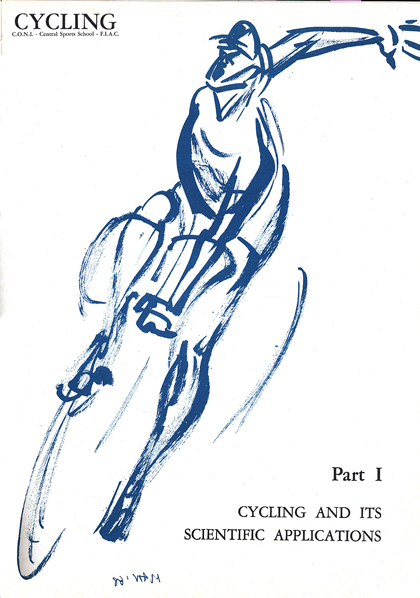
Figure 3. Now those are some "deep drop" bars
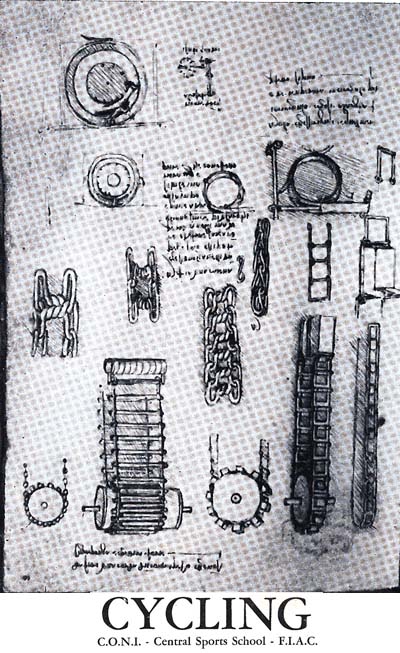
Figure 4. It is difficult see how all this led to an eleven speed
After the cover plate to Part I, readers are greeted with a reproduction of Leonardo da Vinci’s work notes regarding the chain drive system (Figure 4). That is very appropriate, because it is the chain drive that gives us the modern bicycle, truly the heart of the machine as we know it.
A short survey of the sport follows, with poetry and appropriate homage given to past champions, including those on the three-wheeled variety (Figure 5).
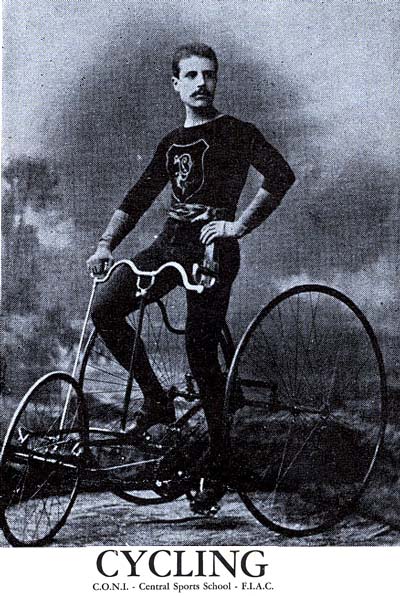 Figure 5. Stanislao Parboni, past trike champion, showing good form and a fantastic sense of style. Where can you get those gloves?
Figure 5. Stanislao Parboni, past trike champion, showing good form and a fantastic sense of style. Where can you get those gloves?
Chapter 1 concludes with discussion of the bicycle in society in general. Seeing the sport and competition as part of a larger worldview is not something that we tend to see today. “It was Dr. Dudley White—Eisenhower’s famous heart specialist—who declared, many years ago that, ‘the average citizen is a slave to his car’ and who therefore recommended, as an antidote to the vascular—circulatory ailments resulting form an excessively sedentary and ‘highly strung’ life—use of the bicycle.”
Chapter 2, Sports Hygiene, is where we begin to see the purpose of this book. This is a manual for the sport manager, and keeping your riders healthy is basic knowledge. What would a manual be without some practical tips? Here’s one for getting rid of lice. “The cure for this condition consists in shaving the hair and in using anti-parasitic powders having a basis of mercury derivatives and of DDT.”
Before we all chuckle, or reel in horror at the ignorance of the past, the pages on The Fight Against Doping are very telling and serious. This section makes it clear that doping was something to be fought. “The use of substances whose aim is to artificially increase the efficiency of the athlete in competition, thereby altering his competitive morality and psychophysical efficiency: doping is an unfair practice in as much as it tends to place an athlete in conditions of advantage over the other competitors, which is not sportsmanlike.”
The onus to oppose doping is placed not only on the athlete, but also on the manager and trainer. “The trainer also should consider doping as his potential enemy, even at a professional level. In fact, his ability and skill could be laid open to discussion by a victory or result obtained thanks to the decisive aid of pharmacological factors. In fact, in this last case, it might be asked what part of the ability of his trainer might have played in the preparation of the athlete.”
Cyclists love to eat, and we are given plenty of material to masticate in Chapter 4, Nutrition and Feeding. Energy requirements are surveyed, and we are encouraged to give instruction regarding ample use of the mandible. “Food should be chewed well; this rule, applicable to everyone (in fact in Latin there was a saying ‘in ore prima digestion,’ that is to say ‘the first digestion takes place in the mouth,’ is especially important for the athlete who should get used to chewing his food well.”
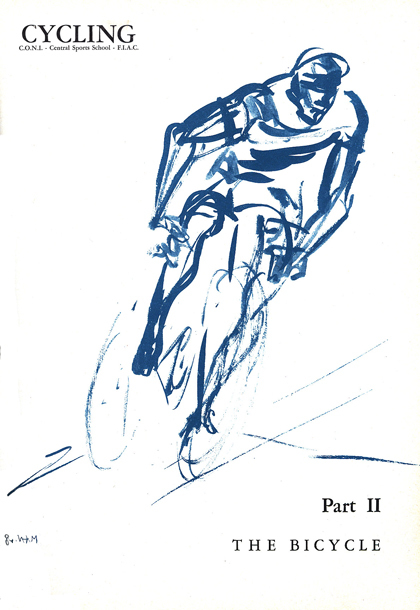 Figure 6. An aggressive rider on the move
Figure 6. An aggressive rider on the move
Racing food gets extensive discussion. “The food packet is generally prepared the evening prior to racing or training. The sandwiches, sugar lumps, fruit (peeled and cut in slices), biscuits, jam, etc. are wrapped in greaseproof paper... Cooked ham is to be preferred in cold weather, and jam in hot weather.” The actual race-feed is then reviewed, and when to forego a feed for an attack. The track cyclist, of course, gets separate instructions.
Part II, THE BICYCLE, begins with the best image by Mancioli in the entire book, at least in my opinion (Figure 6). This rider is out of the saddle, and to my eye, climbing as well, with just a hint of a machine below.
The first words of this chapter lay out the contents, “...we will deal with the nomenclature of the parts of the bicycle.” Much time is spent giving names the parts and describing the material and manufacturing processes. Diagrams in these pages are usually line drawings of parts schematics (Figure 7).
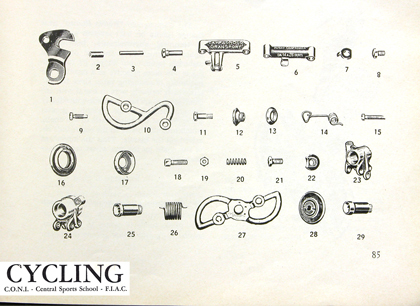 Figure 7. All the parts needed to change gears are laid out. Note the non-integrated hanger bracket. The integrated hanger was not the norm at that time.
Figure 7. All the parts needed to change gears are laid out. Note the non-integrated hanger bracket. The integrated hanger was not the norm at that time.
It is interesting the amount of detail and thought found here, as under STRAPS: “Care should be taken to avoid that the buckle, which is stiff, is fastened on the bone of the foot (at the height where the fifth metacarpus protrudes) or that it is too high up, that is to say, toward the eye of the toe-clip. On the other hand, it should remain about halfway between the pedal cage and the toe-clip eye.”
While the chain drive is given a place of honor in the beginning of the book, the piece of equipment most discussed is the tyre (Figure 8). That is as it should be, and for this book, it means only the tubular tyre (alway spelled with the “y”, never with the “i”). With more than seven pages through out the book, we learn of the types of tubular rims, tyre types, and procedures for mounting.
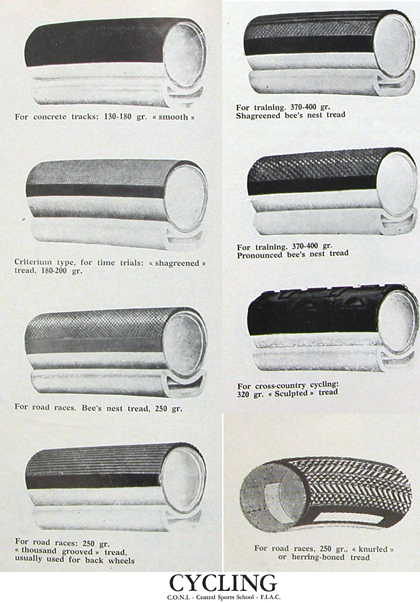
Figure 8. Tyres for concrete tracks, cross-country cycling, training, criteriums, and road racing. My favorite? The "Shagreened," because it expands the vocabulary.
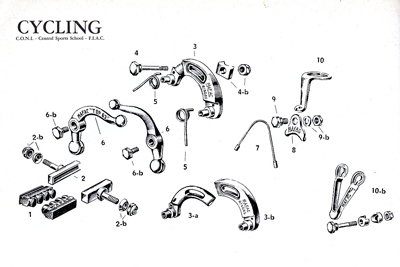
Figure 9. The French Mafac center pull brake, a powerful brake for its time
Not surprisingly, for this section on equipment, the emphasis is on Italian made components, but not exclusively. France makes appearances in both derailleurs and brakes (Figure 9).
The bicycle is of course going to see a lot of use, and maintenance is also reviewed, “The overhaul and cleaning of the bicycle should be among the foremost duties of the athlete who—as an optimum rule—should take upon himself the final almost ‘finicky’ check-up of the means even though he may have recourse to the assistance of a mechanic.” There is truth in this thought, however, it must be said that the athlete should know and appreciate his/her limits, and know when to seek professional help. Bikes are still bikes, with two wheels, a saddle, and handlebars, but the technology of today’s machines are much different then during the time of this book. It may be good advice to pack-ones-parachute, but at a minimum have a professional check your packing.
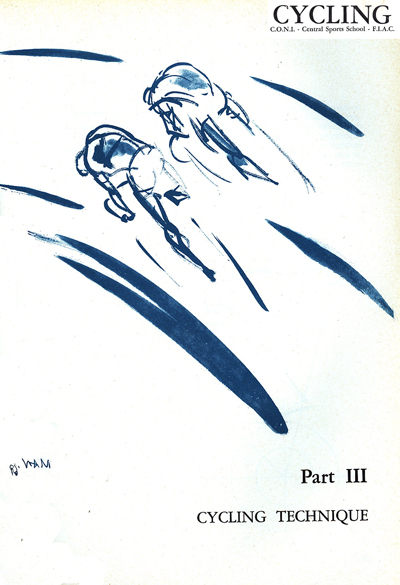 Figure 10. My money is on the rider on the left
Figure 10. My money is on the rider on the left
One suggestion is very important. After work is completed, the rider needs to test it: “After completing all the foregoing checks, it is then necessary to ‘try out’ the bicycle by means of a series of ‘spurts’ both on the left leg and on the right, changing all the gears from the first to the last, and braking so as to ensure that all the parts of the bicycle, under strain, respond in all cases in optimum manner and work perfectly insofar as each is concerned.”
For Part III, O. Mancioli pens, or rather brushes, a story of two cyclists, heads down, driving forward, possibly on a track, though it could easy be a left-sweeping piece of road (Figure 10). The outer rider has the lead, but the rider on the inside seems to me to be charging. I wonder how this contest will conclude.
This part of the manual begins heavily with theorization with the Anatomical functional analysis of the motor actions of pedaling. The technicians of that era did not have the benefit of the power meters that can be calibrated to show the power cycles of the pedal stoke. Vector analysis is combined with years of experience (Figure 11).
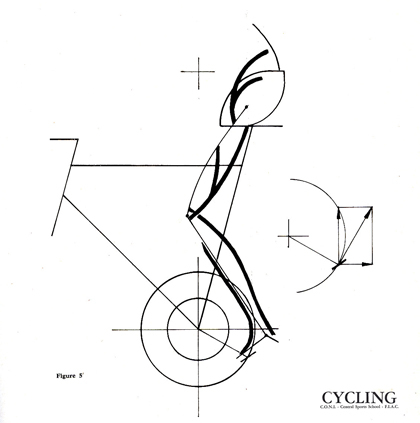 Figure 11. The analysis of the pedal stroke with force vectors
Figure 11. The analysis of the pedal stroke with force vectors
There is much still that rings true in the Position on the Bicycle. There are detailed discussion on the saddle placement and how it will affect the type of racing. The final results are determined by empirical testing on the road, and the style of the athlete, because “the position of the bicycle is a strictly personal matter, according to the length of the cyclist’s limbs and trunk, and also bearing in mind the action.”
An excellent summary is given for what should be achieved by the “ideal position”:
a. excellent breathing;
b. aerodynamicity;
c. distribution of the athlete’s weight on the bicycle;
d. sense of ease and naturalness with should be felt;
e. satisfying the best condition for riding the bicycle;
f. feeling sheltered by the arms and neck, so that there is no difficulty in breathing in the position adopted.
It may be hard to believe, but I was once myself an aspiring racer. I remember reading a section in Part III years ago, a section that bothered me. It described exercises for unlocking thoracic mobilisation. Even rereading I am still not clear what it means, but somehow I knew I didn’t have this down, and somehow that would be bad. This will be revisited at the end of this article.
There is much detail here on training and achieving a state of form, and then in applying that form to the race. Racing is discussed in every small particular, from the uniform and type of hairnet that is appropriate, behavior in a group, pacing, sprinting, climbing, descending, and, of course, Getting away.
Six pages are devoted to my favorite event, the TTT (Team Time Trial). Now, sadly expunged from the Olympic Games, it is still found in the major Tours. This event appeals to me because of the team aspect, which I would like to see more of, not less, in competitive cycling. The Sports Manager must look for some very special athletes: “It should be immediately be stressed that in the case of a team time trial the individualistic mentality which cycling develops in athletes practicing this sport should be banned. Whilst in all the other cycling specialties (except the tandem events), the cyclist is led to reason unilaterally, in the team time trial he must be convinced that, by helping his team companions at a certain moment, he may be helped when in need in the later stages of the race when any drop in his performance will be offset by his team mates. Thus the athlete specializing in the team trial should have a different forma mentis characterized above all by altruism, because in producing effort, to make up for possible momentary lapses by on or more of his team mates, he should ensure that his own performance is in all case ‘useful’ to the other members of the team.”
Track races, chapter 10 is, appropriately, tactically heavy, with much emphasis on where to be and when to be there. After a technical introduction is given to the track, the discussion of “chess play” begins. “In order to be able to prepare tactically (the) sprinter must have lightning quick reflexes and intelligence. It should never be forgotten that the slightest distraction or mistake in a sprinting race on the track have to be paid for, and it is practically impossible to make up for them...”
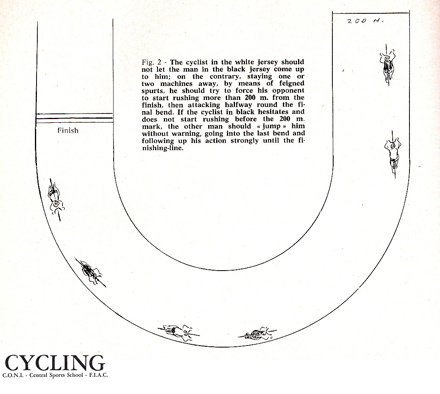 Figure 12. The cat and mouse of the track
Figure 12. The cat and mouse of the track
Chapter 11, The Sports Manager, the penultimate chapter, speaks directly to the sports manager’s profession. I did not come to appreciate this part of CYCLING until much later in life. Putting down on paper the role of the manager does much to clarify this profession. Even if you disagree with specifics in this manual, it is clear that it addresses many of the issues and aspects of sport that coaches and managers must face. The national governing body of any sport would do well to follow suit, and publish a manifesto, a doctrine of what they believe to be important.
Appearances are important, and here we learn even of the style of dress for the Sports Manager, in the classroom, for lectures and meetings, and for following up on races and on the track. In each case there are differences, but I would cite here this statement under Following up on races and on the track, “...his dress will in all cases be sober, sporting and devoid of publicity gags.”
In Propriety of Language we learn of basic civil discourse: “He should avoid uncivil or incorrect expressions. He should be cautious and serene in his personal appraisals, and will keep them to himself; he will avoid discussions and comparisons; he will lay any doubts which he may have to his own managing council or to the Club on which he depends; he will mark his work and attitude with the utmost commitment, the greatest possible dignity of expression and serenity in his task, and the firm determination to progressively improve his own cultural and technical heritage.”
We are given a review of appropriate Sports Manger behavior in his or her relations with other people in the field of cycling including club managers, federal managers, other sports manager, journalist, sportsmen, and “fans.” “These are pathological individuals, constantly the prey to biased enthusiasms and who there for see the problems on the basis of their fanaticism and not the sport. Accordingly with the fans care should be taken to avoid discussions, which might develop into uncontrolled polemics, and the conversation should be kept on a calm tone, trying to understand the points of view of the other man, backing up within the limits of possibility, with a view to changing the subject as soon as possible after having conveyed that one will take due to account of the point of view expressed on a future occasion. Usually, in order to illustrate a thesis, the fan needs to demonstrate first of all to himself and then to others that is a man who judges objectively and not on the basis of preferences. In this case, the sports manager should tactfully try to attenuate a possible negative judgment, so that the fan himself does not identify the other man as his presumed opponent.”
The last two pages of the Chapter 11 speak strongly to the profession on sports managers. “The present-day evolution in all social fields, the discoveries and conquests of science make necessary a constant updating of one’s knowledge; and this is important, above all if we consider that the sports manager is in contact with young people in respect of whom he should act as teacher and guide.”
To be allowed to work with youth is an honor and privilege. Anyone doing so should take on his/her role with the seriousness of a professional. It has been said, and it is certainly true; it is not about the bike. “The sport’s manager work, apart from his technical function proper, is above all of a psychological nature, penetrating into the innermost recesses of the individual concerned to strip him of his qualities and faults, so as to be able to act accordingly. And it is very difficult to understand an athlete and thus advise him if the athlete himself with honesty and sincerity does not confide in his sports manager as in a confessor.”
The section Understanding of the sacrifice of cyclists and other collaborators gives us much to consider. Treating the entire team under his/her control with respect is placed utmost in this section. Developing an appreciation as to what the rider goes through cannot be underestimated, “Cycling is one of the hardest of sports, the practice of which requires considerable sacrifices.”
Everyone loves a winner, but the sports manager must keep this in perspective. “Unfortunately it is usually when a cyclist is at the height of his form (when in fact he needs very little!), that everyone is all over him, smothering him with affection, attachment, satisfaction, and concern, all of which are enthusiasms typical of the ‘fan’ which do nothing to help the athlete himself. Absurd as it may seem, we might even arrive at the conclusion that such manifestations are not concerned with the cyclist nor do they express a desire to take part in his joy, but in fact constitute—for the public—the exterior aspect of an inner need to show off.”
The team aspect of cycling comes through loud and clear in CYCLING. By team (club), more is meant then the people on the bicycles, “Besides the sports manager a club contains other persons having different functions but who are working to achieve the same result as him. These are the members of the Managing Council, the doctor, the masseur, the mechanic, the physical education teacher, the administrator and other club leaders; it is important to recognize the merits of all these persons, all too often passed over. Out of a sense of respect for one’s collaborators, and above all of fairness, everyone’s merits should be recognized, thus uniting in the satisfaction at work carried out and results achieved all those who have collaborated, in their various capacities, in same.”
Chapter twelve, the culminating chapter, is titled Survey and appraisal of the personality of the athlete. The sports manager is encouraged here to develop an appreciation of the feedback loop, or the interplay, between an athletes physical efforts and the morale, “...this collaboration is achieved with serenity, confidence and determination.”
The trainer’s task is to see that causes of discontent, fears, passions, worries, grief and negative elements are removed, hence building conviction and belief. “Confidence in oneself and in one’s strength should work on this basis of psychic integrity; but this should be a serene and conscious confidence, not a foolish and presumptuous pride which often ends up in defeat because, among other things, it finds all one’s opponents coalesced as it were to teach a lesson to the individual over-sure of himself; nor modesty and condescension which lead one to undergo the initiatives of others and thus the race itself.”
We are given a sense of the dedication to details that this the life of an athlete demands. This is done through strength of character, “In addition, the morale should be kept up at all times, as it were with its own training, namely, imposing renunciations and sacrifices even in little things, dominating nerves and instincts, regulating living habits from the dietetical point of view, and the viewpoints of daily timetable, human relations, and employment of free time, acting in short in all cases with a view to the success which the athlete hopes to achieve. In fact the will should be educated and strengthened by means of veritable psychic exercises aimed at braking enthusiasms, impulses and reactions which might go beyond the normal limits of the correct affirmation of one’s own personality and civic society.”
We come finally to the last sentence in the manual. Page after page we have received instruction on philosophy, on science (as it was then), tactics, attitude, and every possible approach to achieving success in this venue. During my time on the bike, I think, intuitively, I knew what was coming for me, or rather it was made apparent by results. Perhaps it was those darn “thoracic mobilizations” that I could not get a handle on. “The athlete should be the severest judge of himself, naturally being helped in this work of moral building, by the invaluable and irreplaceable collaboration of the sports manager; and as a conscientious individual, he should also have the courage, in necessary, to give up and go out and find himself other forms of activity by which to make his position in society.”
Conclusion
CYCLING is certainly a book from a different era. It exhibits many prejudices, common for its time. The science is dated, and in some cases just flat out wrong. Yet, at the core, the book is both a reflection of this sport, and a molder and shaper of cycling. This is not easy reading, nor is it reading for the athlete. It is written for the coach, the team manager, and the sport administrator. These are the people who should read this manual. What I take from CYCLING is simply this: It is important that professionals take time to place in writing what defines their profession. For example: Just how does one achieve the specialized knowledge of a sport manager? Can the teaching of this knowledge be standardized? What are the expectations for these cycling professionals?
Documentation... it isn’t just for bureaucrats.
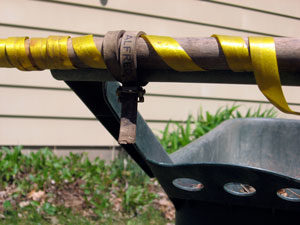 Figure 13. The mighty Binda toe strap is laminated for strength. The leather is soft to accept the teeth of the buckle and to be gentle on the metatarsals. The handlebar tape here is, of course, Benotto.
Figure 13. The mighty Binda toe strap is laminated for strength. The leather is soft to accept the teeth of the buckle and to be gentle on the metatarsals. The handlebar tape here is, of course, Benotto.
Postscript: A lifetime in cycling leads to the accumulation of your past bikes and work, as it becomes the detritus of daily living. During some recent spring gardening, I was again reminded how equipment just fades away. A broken wheelbarrow handle was repaired years ago with a wooden broomstick, fastened in place with an Alfredo Binda toe strap (Figure 13). Springtime tells us not to cling to the past. Our roots may be in the ground, but new life, and a new season of cycling, pushes ever upwards.
For a treat for your eyes, see more of Ottorino Mancioli here.